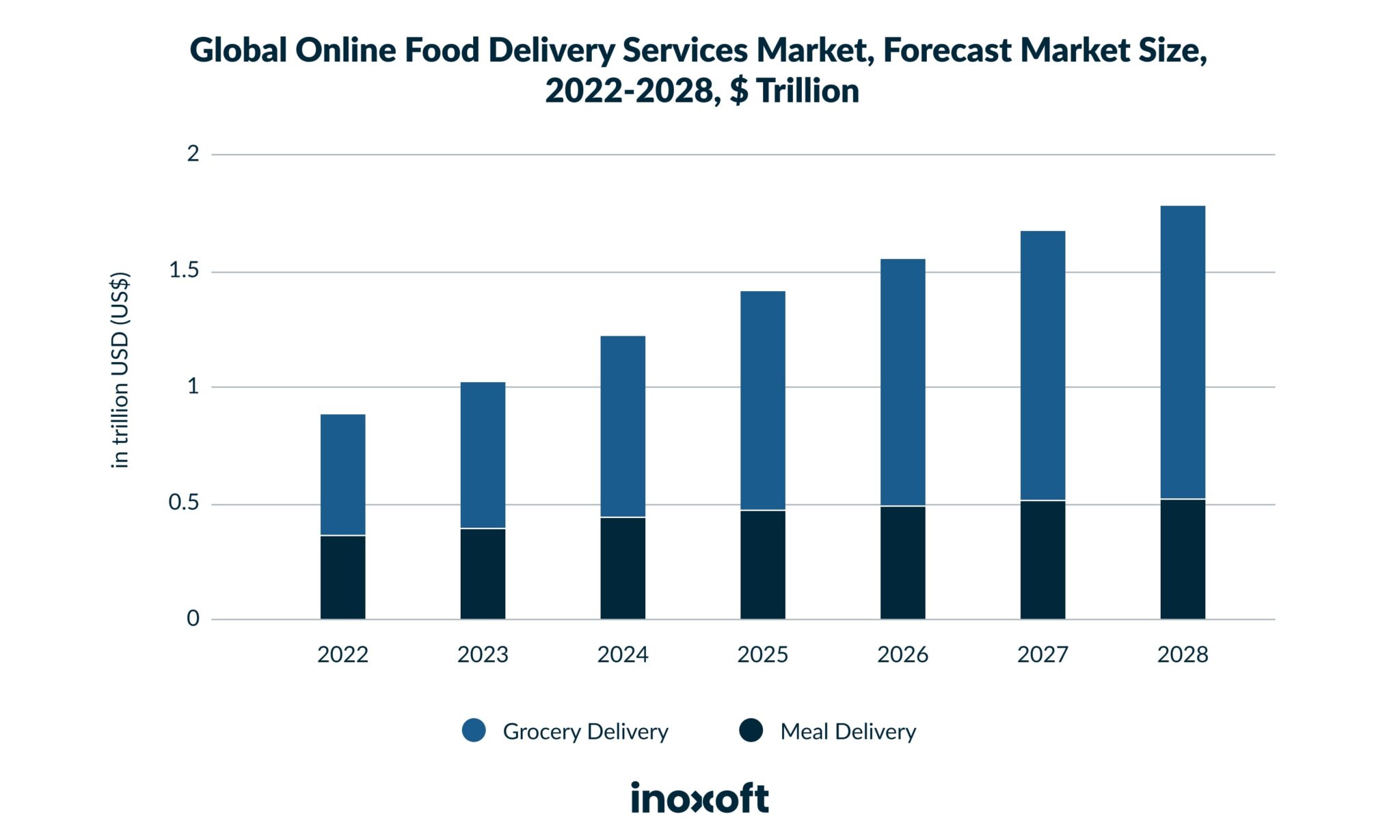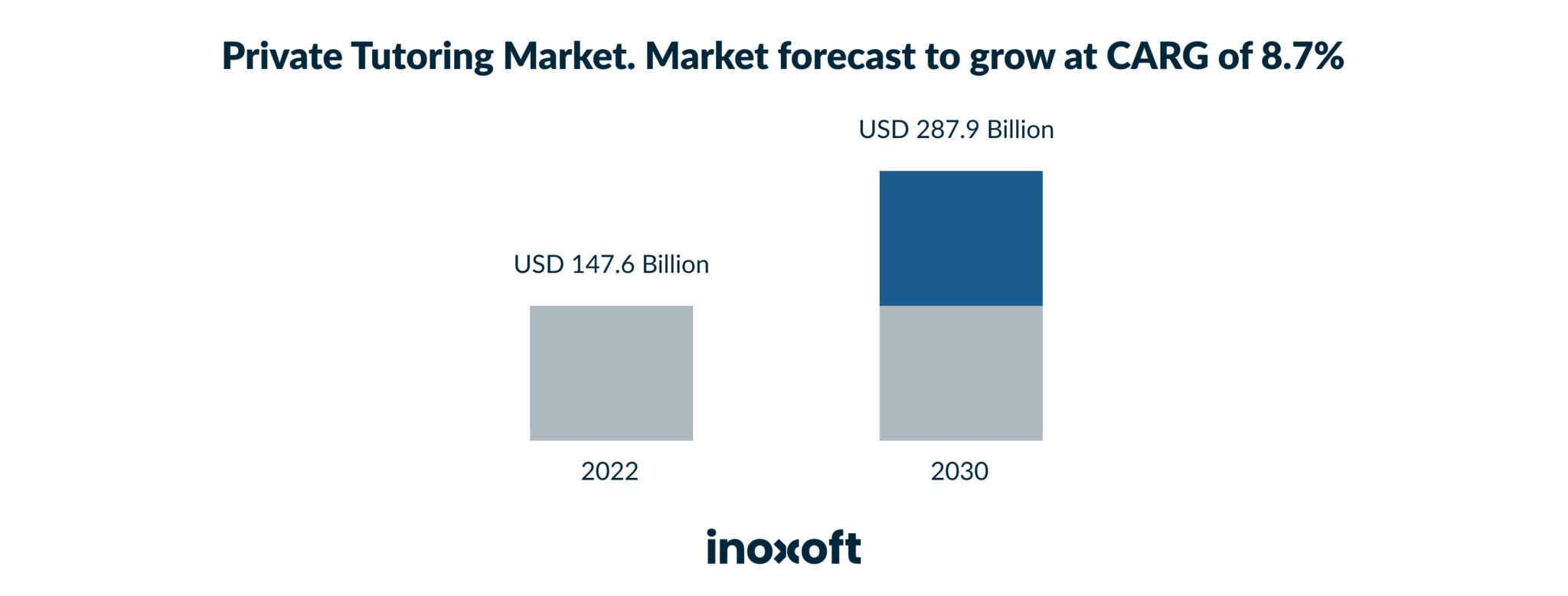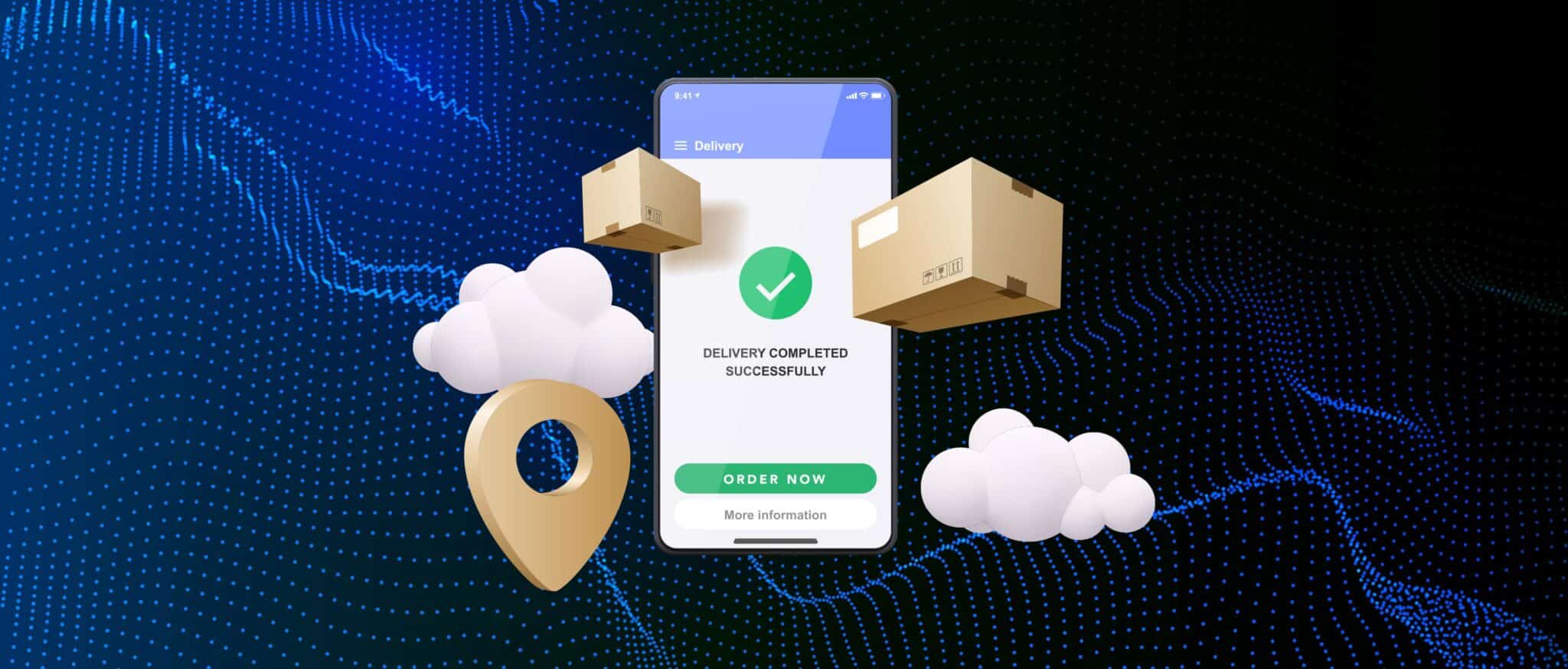Delivery services belong to a few industries at a time. For example, e-commerce and retail, logistics, and transportation. Each of the industries offers its goods or services that can be taken, transported, and delivered to the customers using B2B, B2C, or C2C business models. The order is placed by the customer, and the delivery is usually done by the custom courier service or belongs to a subcontractor courier company, and the order management is done by the delivery app admin.
So, how to create a delivery service app? How to build an on-demand courier delivery app? How to make an app for centralized distribution? What should it include and will it be profitable in the future? These and more questions are going to be answered further.
- eCommerce and Retail
- Logistics and Transportation
- What is an On-Demand Delivery App?
- Food delivery
- Laundry service
- Tutor app development
- Doctor appointment
- Online medicine delivery
- How Does the On-Demand Delivery Work?
- Tips to Create an On-Demand Delivery App
- 1. User acquisition
- 2. Transportation and delivery
- 3. Gather requirements
- 4. Visual and technical designs
- 5. MVP creation
- 6. Development
- 7. Implement key features
- 8. Testing
- 9. App maintenance
- 10. User Retention
- Consider Inoxoft your trusted partner
- Summing Up: What are the Costs?
eCommerce and Retail
What concerns e-commerce, it has become an indispensable part of the global retail market counting $3.53 trillion in sales worldwide. The retail industry has been substantially transformed due to the spread of the internet, and the digitalization of human life that made it possible for consumers from any country to benefit from convenient online purchases. As internet access and adoption are going through a rapid increase worldwide, the number of digital buyers increases annually.
What’s more, Coronavirus pandemics pose a major influence on e-commerce and online consumer purchases globally. Making digital orders substitute for crowded stores and shopping malls. The same year, global retail e-commerce traffic had a record of 22 billion monthly visits, where the purchase demand included mostly groceries, clothing, and retail tech items.
Logistics and Transportation
Logistics, in turn, is the trade business between two or more sides utilizing transporting, storing, and delivering goods. Today, logistics companies carry out land, air, and water cargo transportation services. The industry is among the pillars of international trade. Global rail freight traffic is expected to reach roughly 12 trillion-ton kilometers by 2025. Transportation is becoming technology-supported more and more with the rise in global demand.
Like in previous years, China will be the leading country among digital buyers. The country alone will produce $2.779 trillion in e-commerce sales or 56.8% and will become the first country to transact more than half of its retail sales digitally, e.g. 52.1%.
If to speak about digital purchasing of products and services, what are the means through which people make online orders? The answer is pretty simple – through on-demand delivery apps. How does the on-demand delivery app work? What are the pillars of the on-demand business? And, build an on-demand delivery app? Let’s find out!
Read more: transportation management application development
What is an On-Demand Delivery App?
An on-demand delivery app is a type of software that connects users with different service providers allowing users to order any service online and have a doorstep delivery. It is the future of the mobile app industry. Techopedia gives a more sophisticated explanation, stating that on-demand software is a type of software delivery model that is deployed and managed on a vendor’s cloud computing infrastructure and accessed by users over the Internet when required.
On-demand delivery applications are also called Software as a Service (SaaS) because they are online and cloud-based apps. SaaS is a service platform by a service delivery provider accessible via the internet. The global public SaaS market is projected to reach US $282.20bn this year. SaaS, platform as a service (PaaS), and infrastructure as a service (IaaS) are the three main categories of cloud computing on the market. Build an on-demand delivery app to enhance your business.
There are various types of on-demand delivery software. Some of them are:
- Food Delivery
- Laundry Service
- Grocery Delivery
- Tutor app development
- Doctor appointment
- Online medicine delivery
Food delivery
Delivery of food has become one of the most demanded services on the market. With more users becoming tech-savvy, the rise of internet penetration, and COVID-19 pandemics, ordering food online has been reevaluated. Thus, the growth of the food delivery market became dependent on the users and their needs: the more users order, the higher the turnover and benefits.
In 2023 the market have grown at a CAGR of 11.51 percent and reached $154.34 billion. According to different estimates, from 2021 to 2024, this revenue is projected to show an annual growth rate of 6.36%, resulting in $182,327 million this year.

In Europe alone, the Online Food Delivery Market is forecasted to grow by 5.83% CAGR, and achieve $20.27 billion by 2026.
A few years ago, Uber Eat, Glovo, delivery Club, Just Eat, and Deliveroo were the top five highest-installed food delivery apps across Europe. According to Emergen Research, on global terms, the top companies delivering food in 2023 are Meituan, Uber Eats, Delivery Hero, DoorDash, Grubhub, Deliveroo, Just Eat, Postmates, Swiggy, Zomato. Foober.
Laundry service
In developed countries with a fast life pace, doing laundry is rather a burden that consumes time. Thus, to ensure people save their time on more important tasks a laundry service was invented and became popular this instant. The statistic shows that on-demand laundry services demand is on the rise these days. In 2024, the global online on-demand laundry services market will reach more than $96 billion.
With these trends, according to Facts and Factors, the laundry service market is expected to grow at a CAGR of 38% and is anticipated to reach around $128,500 million by 2026. Top market laundry apps are Cleanly, Delivery.com, DRYV, Edaixi, FlyCleaners, I Hate Ironing, Laundryapp Ltd, PML Solutions Pvt Ltd, Rinse Inc, and others.
Tutor app development
Demand for tutoring has accelerated in recent years. After the COVID-19 pandemic, about 163,921,494 learners have been affected and have to study either from home via educational platforms or online and rely on their capabilities. Some underdeveloped countries can’t even educate children and students online. According to UNESCO, at least 26 countries in the world have closed their educational institutions. So, one of the possible ways to get educated today is to hire a tutor.
In Asia, a startup of the on-demand education delivery app launched and gained popularity pretty quickly. It’s called Snapask. The app has raised $50 million and covers Hong Kong, Taiwan, Malaysia, Indonesia, Thailand, Japan, and South Korea areas. On the platform, tutors can have a maximum of 10 students at a time. Students, in their turn, can have as many as 20 tutors.
The founder and CEO of Snapask – Timothy Yu says,
Snapask allows students to get answers to questions and receive guidance in their studies and tutors can make up to 60% more on the platform than via traditional tutoring methods. Yu points out that
The global market for Private Tutoring, valued at US$147.6 Billion in 2022, is poised for remarkable growth, with projections indicating a revised size of US$287.9 Billion by 2030. This upward trajectory is anticipated to manifest at a CAGR of 8.7% over the analysis period spanning 2022-2030, the online segment is forecasted to experience growth at an estimated CAGR of 10% over the next 6-year period.

According to a source, there are 6 best tutoring apps in the world: Wyzant, Skooli, Varsity Tutors, Chegg, SpecialEdTutoring.com, and Tutor.com.
Doctor appointment
Healthcare and personal well-being were always among the top human priorities. Having an app to make an urgent (or just an ordinary) appointment with a doctor and check all the vital signs is something essential to have. According to The Sentinel Newspaper (KSU), on-demand healthcare connects patients and healthcare providers in real-time with the help of websites, mobile apps, or home visits (if applicable). On-demand healthcare usually supports users by offering follow-up appointments, mental health therapy, care provided by various medical specialists, and assisting in minor accidents and illnesses.
As medical care has been digitally transformed by web and mobile software solutions, it has become easy and convenient to schedule appointments, have more access to treatment, and be able to bypass the waiting time, and avoid waiting rooms. On-demand healthcare has its advantage – it is instant in medical and emergency services.
The growing adoption of universal and advanced on-demand technologies in the healthcare sector drives the on-demand healthcare market. The best on-demand medical providers with their software are Teladoc Health, Inc., HealthTap, Inc., OTHRSource, SolvHealth, Ambeee, UnderWing Health, Doctor On Demand, Inc., Practo, Talkspace, and others.
Online medicine delivery
The Global Medication Management System Market is expected to grow and reach $5.7 billion by 2026, with a growth of 20.1% CAGR. Managing medication needs enables administering, prescribing, and supplying assigned drugs that are monitored and authenticated electronically. Recently, the global medication management market has grown considerably as the number of chronic diseases increased as well as the number of the elderly population. Instead of visiting the nearby pharmacy or drugstore, a demand for computerized physician order entry systems has risen together with the demand for patient monitoring services on remote terms.
ePharmacy is a mediator between the consumer, who requests medicine, and a seller, who works in a drugstore and sells medicine. Being an online platform, ePharmacy is also an on-demand delivery pharmacy. For patients, on-demand delivery of medications is quite convenient as there is no need to be physically present at a drugstore to buy everything the doctor has prescribed. Especially, if the doctor visit was carried out online.
eCommerce companies are searching for more efficient strategies to serve their consumers better and promote consumer well-being. Regions that use ePharmacy on-demand delivery are North America, Europe, Asia-Pacific, and others. The market of ePharmacy is sub-divided into U.S., Mexico, Canada, U.K., France, Germany, Italy, China, Japan, India, South East Asia, GCC, Africa, etc. based on the country’s healthcare level.
The most prominent players in on-demand medication delivery are Walgreen Co., CVS Health, Walmart Inc., The Kroger Co., Giant Eagle, Inc., Express Scripts Holding Company., Rowlands Pharmacy, Optum Rx, Inc., Banner Health, PlanetRX.com, Lloyds Pharmacy Ltd, Drugstore.com, Dr. Fox Pharmacy, MediSave, Pharmacy2U, The SANICARE Group, CanadaDrugs.com, CanAmerica Drugs Inc., The Kroger Company and others.
How Does the On-Demand Delivery Work?
If you’re wondering how to initiate an on-demand delivery service, here’re just 6 easy steps to do so:
Step 1. Initiate a delivery request (order food, groceries, a taxi to go places, etc.).
Step 2. Your order is being processed and matched with the courier service.
Step 3. You need to choose payment options and input your payment method information.
Step 4. Service delivery is done within the set timeline or upon agreement with the customer.
Step 5. The order is received accordingly and it’s confirmed by the customer by signing order blanks.
Step 6. The payment is being deduced from the customer.
Try our custom android app development services to succeed!
Tips to Create an On-Demand Delivery App
How to make a delivery app? Before building an on-demand delivery app consider focusing on several pre-steps. These are:

1. User acquisition
Become known to your potential audience, promote your service, search for possible local partners, and start a smart business with future actions pre-planned and defined. Your end-users are the target audience and the people, who have certain needs. Understanding who these people are and what are their needs makes it easier to implement something useful.
2. Transportation and delivery
Usually, the company providing an on-demand delivery service has courier subcontractors that carry out doorstep deliveries. Thus, to ensure you won’t spend more costs than are needed, plan synchronized routes, manage the right vehicle for a delivery package, use IoT and AI to optimize time per one delivery, and enhance your logistics. In accumulating your idea potential, this step is a must-think-through.
3. Gather requirements
Before getting into production, it is essential to answer the following questions in detail:
- Is your business idea unique?
- Who are your market competitors?
- Who is your target audience?
- What features can make your app stand out?
- What security protocols will your app include?
- What budget do you have?
Most of these questions will set the direction of your project. So, never neglect this step. Your software development partner will need to hear those requirements in detail.
4. Visual and technical designs
There is a need to create wireframes for your app and a working prototype to see the user side of the app. Usually, the team you hire does that for you. What is needed is a vision of the app’s design. Mostly, designers will listen to what you want. But, you need to be inspired by the ideas of your competitors and existing businesses. Make the design simple and the UX smooth. Users like simplicity in visualizations as well as in navigation.
5. MVP creation
Before launching the app onto the market, consider creating an MVP (Minimum Viable Product), where there are minimum features specifically for early testing and future product improvement. This stage reduces errors in app building and saves costs. Besides, who told me an MVP is not a functional app? It truly is! And, strategically, it saves you costs and time for deploying features users might not like.
6. Development
With the approved MVP you can hire the best software engineers and start the development of the new software. The process will be divided into sprints and demos according to the most popular Agile principles.
7. Implement key features
The on-demand delivery apps have three potential variants: app for end-users, courier app, and admin-powered app. So, the app for each party should have the following features:
|
User App |
Courier App |
Admin App |
|
Sign up |
Registration |
Content management |
|
Order placement |
Order management |
Order management |
|
Search option |
GPS-support |
Module for customer support |
|
Schedule delivery |
In-app chat |
App usage analytics |
|
Real-time delivery tracking |
Order history |
|
|
Push notifications |
Contactless delivery |
|
|
Review/Rate |
||
|
In-app chat |
||
|
Order history |
||
|
Payment option |
||
|
Geolocation |
||
|
Contactless delivery |
Check out also our on-demand fuel delivery app development to know what you can have as an end result.
8. Testing
Testing, as a stage, should be initiated from the very beginning of requirements gathering. So, by understanding what the app is about and for whom exactly, testers can provide acceptance criteria for an app and test every sprint separately. This will eliminate future risks of the app crashing.
9. App maintenance
If you need to upload updates and take care after the app has been launched (especially if it is an MVP and you are going to integrate more features), consider further app maintenance. This will ensure the app’s flawless work even after it is launched.
10. User Retention
To ensure your users will always be loyal, your on-demand delivery services should be flawless with on-time user support, discounts, and sales, adhere to customer feedback, and have flexible working hours.
Based on these features the actions within the app should be focused on the delivery of products and services. Now, you know how to make an on-demand app. The order process will look like this:
- Users request a product/service
- The on-demand service provider checks availability and approves the order
- Users can track their order on the map
- The order is being delivered
- Users can rate and write a review about the on-demand delivery service
Need a cross-platform app? Learn how to convert the Android app to iOS!
Consider Inoxoft your trusted partner
Choose Inoxoft as your software development provider and succeed. Our team has valuable experience in on-demand delivery app development. We know exactly how to develop an on-demand delivery app. We are young, forward-thinking, and skilled professionals who can deploy an innovative on-demand delivery platform to enhance your business. Don’t waste time – contact Inoxoft and receive a consultation. You can request a proposal here.
Summing Up: What are the Costs?
The costs to create an app for delivery will highly depend on the app itself, its features, its technology stack, and whether it is going to be cross-platform. Also, the costs will vary depending on the type of the app: user, courier, or admin, and the industry. Simple web apps, progressive web apps, and native apps require a second thought as with implementing features and add-ons the cost of each type will differ significantly. The other cost to think about is the hire an app developer cost.
If you have a unique on-demand delivery app idea, you can always order our discovery phase and see where things might go. Our software engineers, UI/UX designers, and business analyst will provide you with a detailed report on your app and its competitiveness in the market. If you are confident in your idea and its success, contact us anyway and we will provide you with a dedicated team of software development specialists.
Don’t wait until someone implements your idea, create your future with your own hands, create an on-demand delivery app, and let us develop this delivery app for you!
Frequently Asked Questions
What is an on-demand delivery app development?
An on-demand delivery app is a type of software that connects users with different service providers allowing users to order any service online and have a doorstep delivery.
How to create an on-demand delivery app?
There are 10 steps you can use as your strategic plan in building an on-demand delivery app. See them in the article.








